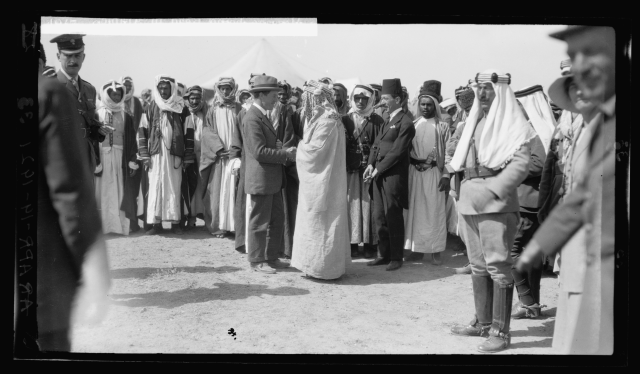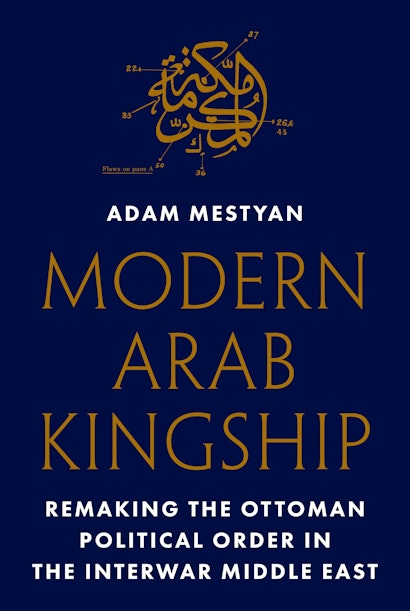The European Union, India, the United States of America, and the United Arab Emirates all have something in common: they are all types of federations. Generally speaking, a federation is an organization in which multiple governments join under a central authority while retaining some degree of autonomy. This type of organization has played a more significant role in modern history than we may realize, especially in the history of Arab peoples in the twentieth century. The historical use of federations in the Middle East is incredibly relevant today as we witness the rise of new blocs and economic associations.
The 1920s was an intriguing decade that shed light on the practices of federalism in the formation of Arab states. Both European occupiers and local activists embraced the idea of federations when establishing new political entities after the collapse of the centuries-old Ottoman Empire. During that time, many activists saw a regional loose political-economic union (ittihad in Arabic) as the way out of the Ottoman Empire, rather than the nation-state model.
To understand the tumultuous Arab landscape of the 1920s, we need to look at the aftermath of World War I. The Allied Powers, primarily the British and French armies, along with their local ally, the Kingdom of the Hijaz (often forgotten today), occupied the Eastern Mediterranean and Red Sea regions that were previously under Ottoman rule. With the exception of the new Republic of Turkey, most of the Ottoman Asian and African provinces remained controlled by European imperial powers. Some regions were classified as Class A mandates of the League of Nations (where now we find Syria, Lebanon, Palestine, Israel, Jordan, and Iraq) and placed under British and French administrations. Other regions were under military occupation (such as the Alexandretta Sandjak, now part of Turkey, Egypt after 1922, the Sudan, Libya), and some were in contractual dependence on the British Empire (like Kuwait). The only fully sovereign entity under the League of Nations’ new law was the small Kingdom of the Hijaz and its holy cities in Arabia (which is now part of Saudi Arabia).
In this complex situation, ex-Ottoman Arab notables and European occupiers clashed over numerous issues while also sharing certain common visions, including the idea of federalism. However, this was not applicable to Palestine due to British policy, League norms, and Zionist settlement, rendering the establishment of a new State of Palestine that could participate in any kind of association impossible. The imperial approach to state-making in other regions involved the adoption of federative ideas, the denial of complete self-determination, the importance of religion as a fundamental norm, and often the establishment of monarchical regimes. Some may refer to this package as the “counterrevolutionary” logic of state-making.
Let us examine as an example what was known as the State of Syria and how its formation in the 1920s can be understood through the lens of imperial-federative logic rather than nationalism.
The roots of Syrian federalism can be traced back to the Ottoman era when plans for decentralizing the Syrian provinces of the empire were proposed in the 1900s and 1910s. Like in other empires, activists argued that the best way to exit the Ottoman Empire was through some form of autonomous government that maintained a looser relationship with the central authority. Modernizing bourgeois Ottoman Syrians were particularly invested in this path of reform.
Following World War I, an actual imperial federation emerged in 1918 when the Allied Powers occupied Ottoman Damascus through the British-affiliated troops of the Kingdom of the Hijaz. The convergence of two late Ottoman initiatives, one influenced by Islam and the other advocating for federalism, led to the creation of a federal Muslim kingdom known as the Kingdom of Syria, sometimes referred to as the “United States of Syria.” In March 1920, Hijazi activists and former Ottoman Arab army officers envisioned a new Muslim super-federation, this Syrian kingdom being in association with the Hijaz and Iraq.
It might seem that when the French army dismantled the emerging kingdom in the summer of 1920, they imposed the European nation-state model on the Arabs. However, the French army took a different approach and created also a federal project often known as the “States of the Levant” (officially, La Fédération des Etats Autonomes de Syrie). This federation consisted of mini-polities, including the State of Damascus, the State of Aleppo, the State of the Alawites. The Government of the Jabal Druze and Greater Lebanon were parts of it only in economic terms. While this federation served the purpose of French military control, it also continued the pre-war Ottoman regional federalism.
Even after the League of Nations’ mandates came into effect in 1923, the imperial-federative logic persisted in the Syrian regions. The League’s mandate only compelled the French administrators to modify their federative organization. As a result, the High Commissioner established the State of Syria in 1925 through an administrative act, uniting the Aleppo and Damascus states and granting some degree of autonomy to the Druze and Alexandretta governments. The eruption of violence, known as the great Syrian revolt, which was brutally suppressed by the French army, had both nationalist motives seeking self-determination and a connection to the reversal of previously granted autonomy.
By 1925, a nation-state of Syria had not yet emerged. But now the question arose regarding the political form of this new administrative State of Syria. The first article of the mandate from the League of Nations requested France to submit an organic law in agreement with the “native authorities.” The definition of this organic law led to many debates both among French administrators and between Syrians, for instance, who has the right to declare this law?
Finally, in 1928 an elected assembly of Syrian notables, closely monitored by the French, had the opportunity to discuss their constitution, and with it, the desired regime. Many expressed a preference for a monarchy, with suggestions even made for a Saudi prince to reign over the new Syrian government, forming a new monarchical association with the emerging Saudi state, which itself was a federation at the time. However, a group of bourgeois-nationalists in Damascus, horrified by this idea, pushed for a secular republic. In the end, they compromised and settled for a Muslim president. The territorial issue in the draft constitution led to a standoff with the French. Finally, the High Commissioner modified the points concerning territory in the draft constitution and, in a typical imperial manner, declared it in 1931. Consequently, the State of Syria became a local state, the first Muslim republic in the 1930s.
In 2023, as we enter a new era of blocs and associations, there is much to be learned from this historical momentum a hundred years ago. The federative idea, religion, the imperial military, and the consideration of monarchical candidates and regimes defined the political landscape. As we reflect on these issues, several questions arise: Did the form of nation-state finally take over the new Arab governments from the 1940s? What were the economic dimensions of Arab federalism? Why have some Arab federations failed, and why have others persisted? And what are the potential implications of reimagining federalist models to address contemporary challenges in the Arab world?
Adam Mestyan is associate professor in the History Department at Duke University. He is the author of Arab Patriotism: The Ideology and Culture of Power in Late Ottoman Egypt (Princeton) and Primordial History, Print Capitalism, and Egyptology in Nineteenth-Century Cairo.

